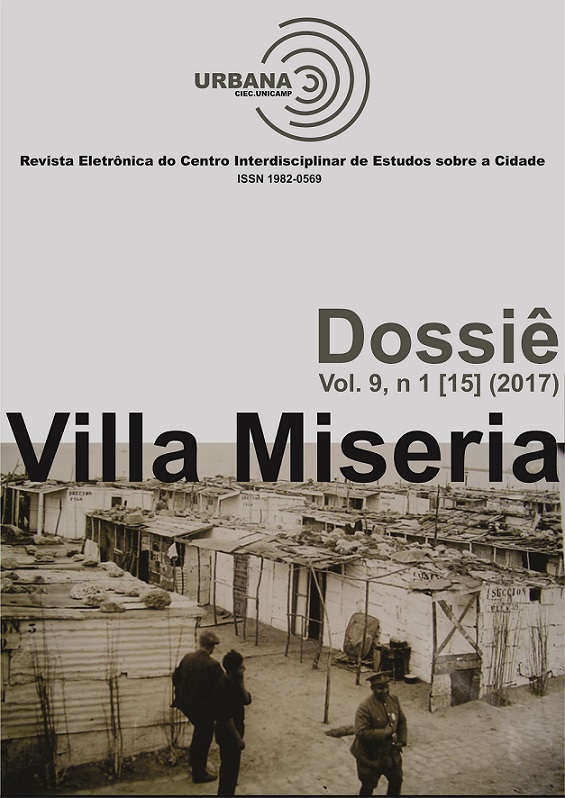Abstract
Informal settlements have been part of the models of urban structure and socio-spatial differentiation of the Latin American city in the last thirty years. However, growth, consolidation and increasing heterogeneity of such settlements make them not just an element of the city but a city in itself. Despite the challenges that such informal cities present in terms of planning and management, there has been no attempt to model their structure and transformation in time. Therefore, in this article we propose the historical perspective as a base to understand the socio-spatial differentiation of the informal city. The case study is Ciudad Nezahualcoyotl, Mexico; a city with an informal origin with more than one million inhabitants and more than fifty years of transformation, where in principle is possible to identify some elements of intraurban differentiation.References
BARROS, JOANA AND FABIANO SOBREIRA. City of Slums: self-organisation across scales. En: CASA Working Paper Series, 55. Centre for Advanced Spatial Analysis, University College London, June 2002, disponible en linea en: http://www.casa.ucl.ac.uk/working_papers/paper55.pdf.
BORSDORF, A. Cómo modelar el desarrollo y la dinámica de la ciudad latinoamericana. En: EURE. Revista Latinoamericana de Estudios Urbano Regionales, 2003, Vol. 29, Nº 86, p. 37-49.
BORSDORF, A.; BÄHR, J. & JANOSCHKA, M. Die Dynamik stadtstrukturellen Wandels in Lateinamerika. En: Geographica Helvetica, 2002, Vol. 4, Nº 57, p. 300-310.
DA PENHA PACHÊCO ET AL. Sensoriamento remoto de alta resolução espacial na caracterização de assentamentos informais. En: Revista de Geografía Norte Grande, 57: 143-159 (2014)
FORD, L. R. A New and Improved Model of Latin American City Structure. En: Geographical Review 86 (3): 437-440. 1996.
HILLIER, BILL MARGARITA GREENE AND JAKE DESYLLAS. Self-generated Neighbourhoods: the role of urban form in the consolidation of informal settlements”. En URBAN DESIGN International 5: 61-96. Stockholm Press, 2000.
INEGI. Censos de Población 1980, 1990. México.
MATHÉY, KOSTA. Selbsthilfe mit Hand und – Kopf! Positionen und Stationen in einer wohnungspolitischen Debatte. En: Trialog, Zeitschrift für das Planen und Bauen in der Dritten Welt. 3. Quartal, 1988. 18: 43-51.
RIBBECK, ECKHART. Die informelle Moderne. Spontanes Bauen in Mexiko Stadt. Awf-verlag. 2002.
SCHTEINGART, M. El proceso de formación y consolidación de un asentamiento popular en México: El caso de Ciudad Nezahualcóyotl. En: Revista Interamericana de Planificación, 15, Nr. 57, 1981, S. 100-114.
STOKES J. CHARLES. A Theory of Slums. En Land Economics, a quarterly journal of Planning, Housing & Public Utilities, Volume XXXVIII, Number 3, 187-197, University of Wisconsin, August 1962.
TESCHNER K. Nezahualcóyotl und Chalco, Irreguläre “Großstädte am Rande der Stadt Mexico. En: Trialog 31, 4 Quartal 1991, S. 24-32.
TURNER, JOHN F. AND ROBERT FICHTER, (eds), Freedom to Build. Dweller Control of the Housing Process. MacMillan. London/New York. 1972.
UN-HABITAT III. NEW URBAN AGENDA. Draft outcome document for adoption in Quito, October 2016. 10 September 2016. Disponible en línea: https://www2.habitat3.org/bitcache/97ced11dcecef85d41f74043195e5472836f6291?vid=588897&disposition=inline&op=view
UN-HABITAT. The challenge of slums: global report on human settlements, United Nations Settlements Programme. UN-HABITAT/Earthscan, London, 2003.
VEGA, ANA L. Proceso de poblamiento en la zona oriente de la Ciudad de México. El caso de Ciudad Nezahualcóyotl. En: Espacio y Vivienda en la Ciudad de México, Schteingart (coord.), El Colegio de México/Asamblea de Representantes del Distrito Federal, 1991. S. 161-177.
WARD, PETER. Housing rehab for consolidated informal settlements: A new policy agenda for 2016 UN-Habitat III. En: Habitat International, Vol. 50, December 2015, pp. 373-384.
WARD, PETER. Mexiko Stadt in Beckel, L. Megacities. Ein Beitrag der Europäischen Raumfahrtagentur zum besseren Verständnis einer globaler Herausforderung. GEOSPACE Verlag. Salzburg, 2001. Pp. 238-243.
WRIGHT, GWENDOLYN. Informal Cities, Multiple Realities. In Alfredo Brillembourg, Kristin Feireiss and Hubert Klumpner, editors, The Informal City, Prestel, Munich, 2005, Pp. 79-82.
ZILLMAN, KERSTIN. Rethinking the compact city: Informal Urban Development in Caracas, in Mike Jenks: Compact Cities: sustainable urban forms for developing countries. London. 2000. P. 193-206.
ZILLMAN, KERSTIN. Consolidation and densification of informal squatter settlements in Caracas, Venezuela. Trialog, A Journal for Planning and Building in the Third World. 57: 26-35, 1998.
A URBANA: Revista Eletrônica do Centro Interdisciplinar de Estudos sobre a Cidade utiliza a licença do Creative Commons (CC), preservando assim, a integridade dos artigos em ambiente de acesso aberto.


